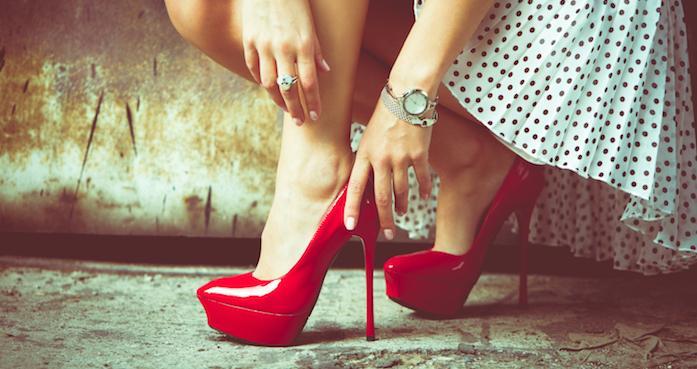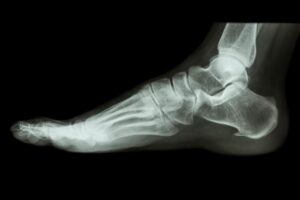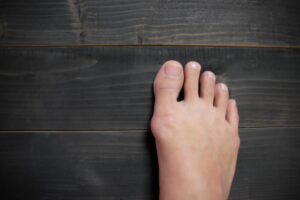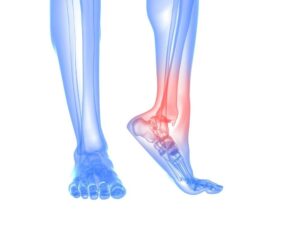Are Your High-Heeled Shoes Causing Hammertoe?

Did you know that your feet have 25% of all the bones in your body? That’s a whopping 52 bones. Each foot also has 19 muscles, 33 joints, and 107 ligaments. With so many working parts, it’s no wonder that nearly 75% of the men and women in the United States have some foot-related pain or problem at some time in their life.
Ryan Golub, DPM and our team here at Arizona Foot Health can help you with many different foot-related problems like bunions, plantar fasciitis, heel pain, ingrown toenails, and hammertoe. Let’s take a closer look at hammertoe and how your high-heeled shoes may be making it worse.
Understanding hammertoe
If your second, third, and fourth toes curl in a claw-like fashion it’s possible that you’re suffering from a deformity known as hammertoe. The condition is caused by an imbalance of your ligaments and muscles at the middle toe joint that forces your toe into the shape of a hammerhead.
Symptoms of hammertoe
If you have hammertoe, you’re likely experiencing one, some, or all of these symptoms:
- It hurts to wear shoes
- Your toes are red
- It’s painful to move your toes
- You have corns on the top of your toes
- Your toe contracts
- You have a burning sensation in your toes
Because of hammertoe’s telltale contracture, it usually just takes a glance for Dr. Golub to make the diagnosis.
Risk factors for hammertoe
You’re at risk for developing hammertoe if you:
- Have flat feet
- Have arthritis
- Have a high foot arch
- Are getting older
- Have bunions
- Are genetically predisposed
A major culprit in the development of hammertoe is repetitive injury to the toe like the type you sustain when you wear pointy, high, ill-fitting shoes. Let’s take a closer look at why.
High-heeled shoes and hammertoe
On average, most people walk 8,000 to 10,000 steps each day. Shoes that fit poorly place undue stress on your feet, lead to long-term complications, and can compromise your overall foot health. High-heeled shoes are particularly problematic because:
- Your toes conform to the shape of the narrow toe box
- They force excess pressure onto the ball of your foot
- They can cause other problems like bunions, corns, calluses, lower back pain, and knee pain
We understand that it’s not realistic to give up high-heeled shoes permanently, so we suggest that you alternate between wearing higher- and lower-heeled shoes periodically throughout the week.
Helpful hammertoe treatment
Dr. Golub customizes your foot care depending on the severity of your hammertoe. Some of the methods he may include in your treatment plan are:
- Orthotics
- Stretching exercises
- Footwear recommendations
If your hammertoe is resistant to these measures, you may need a surgical procedure to free up the tendon or ligament that’s contributing to the problem.
To meet with Dr. Golub and our team about a hammertoe or any other foot problem, call us at 602-973-3888 or use the online scheduling option.
You Might Also Enjoy...
The Achilles Heel
Given Arizona’s climate, patients are able to remain active year round. It’s why we all chose to live here. But…
Alleviating Back Pain and Other Benefits of Custom Orthotics You Didn’t Know About
Would you ever imagine that custom foot orthotics could improve your quality of life? That’s what many people say after…
9 Helpful Tips to Prepare Your Home Before Bunion Surgery
When moderate interventions, such as wearing wider shoes or using pads in your shoes, fail to ease your bunion pain…
When Should You Go to the Doctor for an Ingrown Toenail?
In most cases, you can nurse an ingrown toenail at home with over-the-counter pain medication, topical antibiotic creams, and soaking…
6 Home Exercises to Keep Your Ankles Strong
Ankles that feel wobbly and weak are vulnerable to injury. If you play sports, run, jump, or just walk often,…
Is Surgery My Best Option For Treating Bunions?
You have a bunion and it isn’t pretty, but if your bunion is small enough, or doesn’t hurt, you may…






